Takeaways from a recent Green Festival Expo discussion on the Los Angeles River Revitalization include that the job of planning for water resiliency belongs to all of us, not Frank Gehry regardless of his recent charge, and we must also consider how public access, parkland, ecosystem restoration, cargo and passenger rail, bicycle greenways, and anti-gentrification environmental justice will fit into the mix. Collaboration is the key.
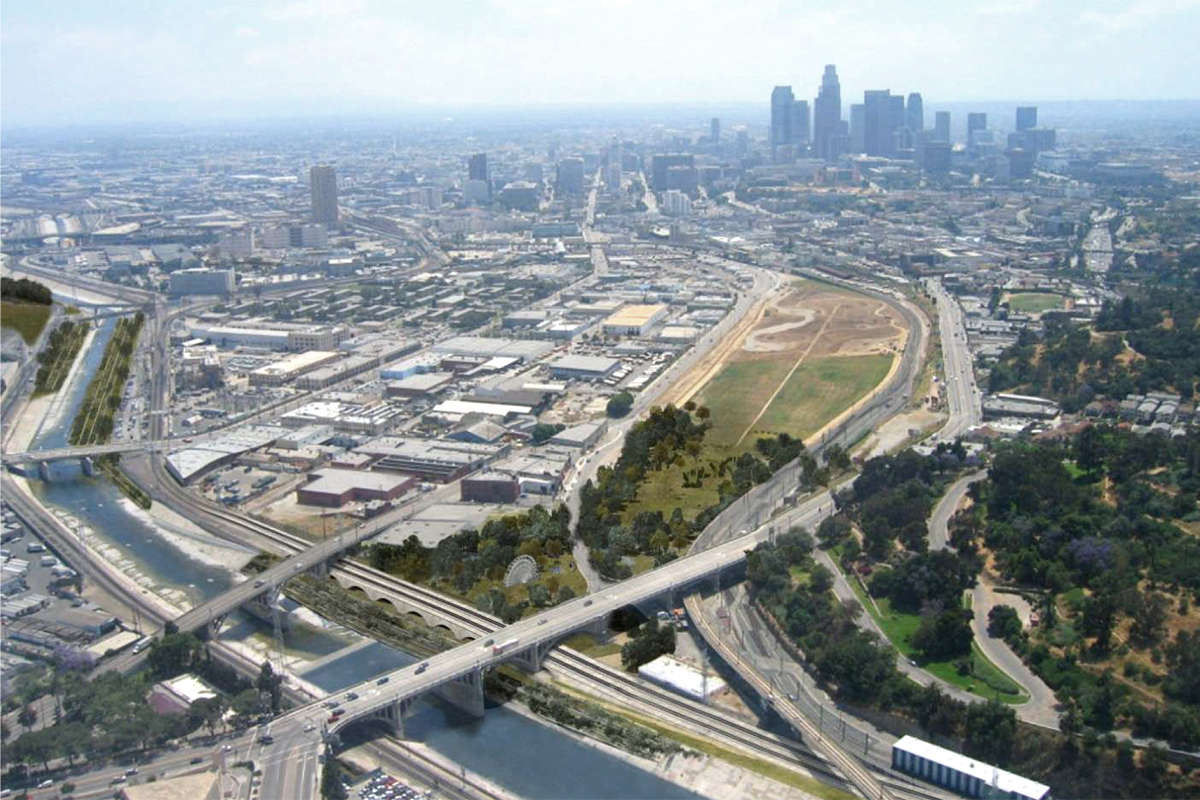

Gehry, Hydrology, and the Misplaced Role of Savior
As we pondered at the Green Festival Expo 2015 panel discussion on the L.A. River Revitalization, confusion, ennui, and ire rule the word on starchitect Frank Gehry and his band of saviors stepping in, courtesy of the LA River Revitalization Corporation (LARRC), to rescue our river. Should we really be asking, “What can we all do to heal our broken relationship with water and watersheds in this arid megalopolis in the desert, facing an ongoing water supply crisis, with no end in sight?”
Melanie Winter, founder of The River Project, made clear from her perspective that we must take matters into our own hands, rather than wait for the cavalry, led by concrete-centric post-modern modernist architects, gentrification-inspired real estate developers, and a not-publicly-accountable non-profit.
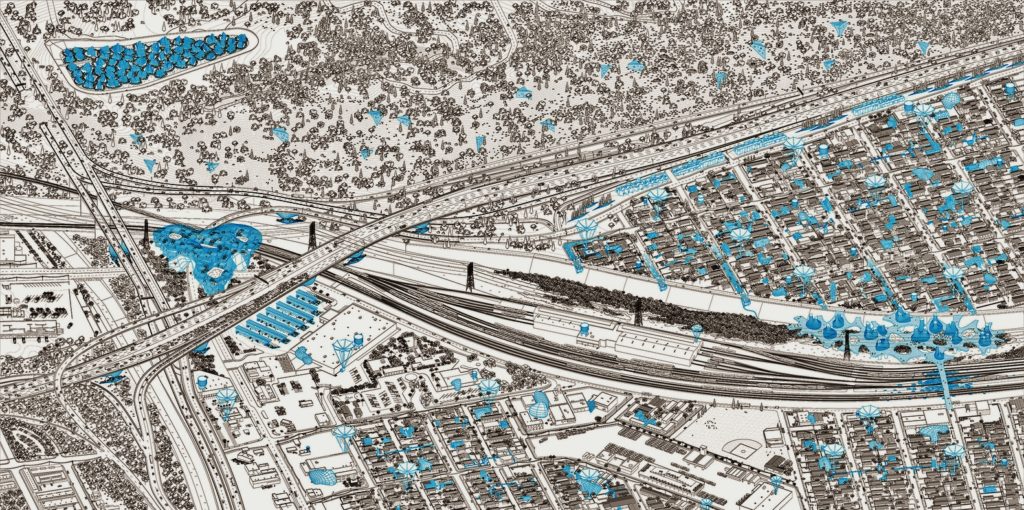

In particular, Hadley Arnold of the Arid Lands Institute wrote a measured response to a fawning L.A. Times Op/Ed on the Gehry-LARRC efforts. She stressed, as opposed to one River plan with some aquifer recharge components, the answer to the water resiliency question calls for a watershed-level approach: “Capturing stormwater flows and directing them to appropriate aquifer recharge sites, reducing the burden of flooding on the River while augmenting local supplies in areas not prone to liquefaction or contamination spread, needs to happen off-river, distributed across the 865-square-mile basin.”
Thus, instead of hashtagging #DontGehryOurRiver, maybe we should be replacing lawns with xeriscaped California natives fed with runoff-collecting bioswales, repave the driveway with permeable concrete, install a graywater reuse system, and cover the home in a sponge-like membrane that captures storm water and collects it.
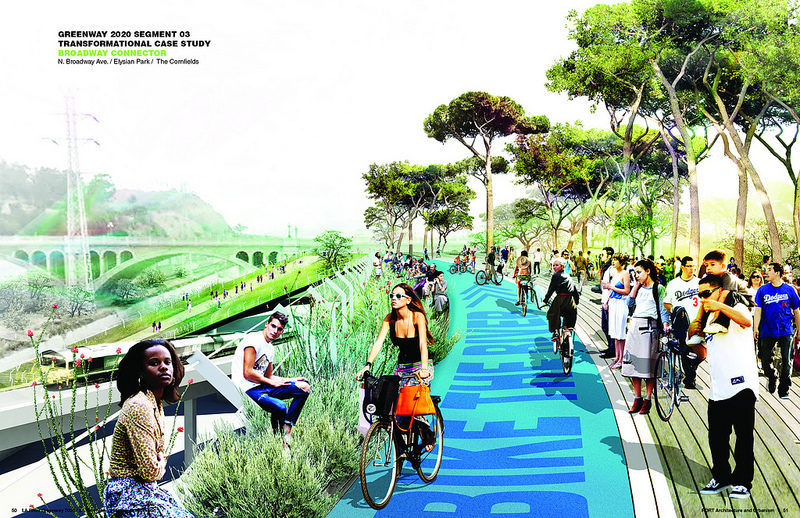

“What new landscapes, architectures and urbanisms will arise, on the River and off, when we treat every drop of rainwater, graywater, and wastewater as supply?” — Hadley Arnold, Arid Lands Institute
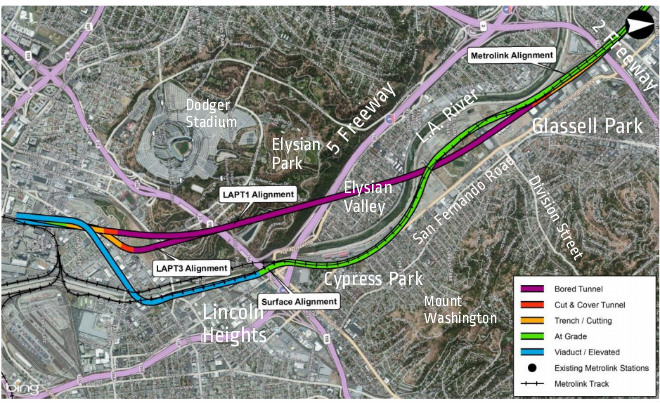

Collaboration is Key
On the issue of the Los Angeles River itself, the modus operandi should be an epic community collaboration to overcome epic challenges. Yes, Lewis MacAdams and the Friends of the Los Angeles River (FoLAR) began the monumental push for the City of L.A. and a multiplicity of entities to come together and dream. Thus, the U.S. Army Corps of Engineers acceded to a $1.35 billion remaking of the 11-mile stretch of said river’s trip from Griffith Park through downtown.
Now an impressive array of advocates have appeared on the landscape who must be heard by any entity tackling the entire 51-mile vision. Here’s to the coming together of bicyclists, hikers, kayakers, engineers, hydrologists, biologists, urban planners, designers, land developers, corporate financiers, railroads, politicians, public agencies, writers, non profits, community advocates, and you.
As Arthur Golding, architect and board member of the Council for Watershed Health, noted in our panel, guided by the many plans already worked out with the public (Cornfield Arroyo Seco Specific Plan, Northeast LA Vision Plan, One Water LA), using the Los Angeles River Improvement Overlay (LA-RIO) District and Enhanced Infrastructure Financing Districts (replacement for redevelopment districts), greening can be encouraged while protecting neighborhood integrity.
But challenges remain…
The multiple epicenters of challenge reveal themselves through it’s different revitalized faces (to name just a few): in addition to the River as one component of water resiliency, add River as multi-modal transportation corridor and River as community-gentrifier.
STORY: Los Angeles River Revitalization: A City Rediscovers its Flow


L.A. River Revitalization Legacy
Re-envisioning the River will create a publicly-accessible open space, recreation and park amenity for the region. The revitalization promises to restore an ecological asset, including critical wildlife and plant habitat, and provide a component of runoff capture and storage. It further will enliven and connect with some of Los Angeles County’s most culturally rich and distinct neighborhoods.
The River further provides a non-vehicular, multi-modal transportation corridor through downtown and the region, whose growth will both conflict and complement the open space, ecology and community connection goals. Yet, this aspect of River as corridor remains vital to the city’s future resiliency and sustainability.
The revitalization endeavors as well to foster economic development and enhance property values for surrounding communities. This will further exacerbate an endemic shortage of affordable housing, thus pushing out communities of color and working poor already at-risk for social and economic survival. So, finally, the River revitalization must redress historic and incidental environmental and social injustices.
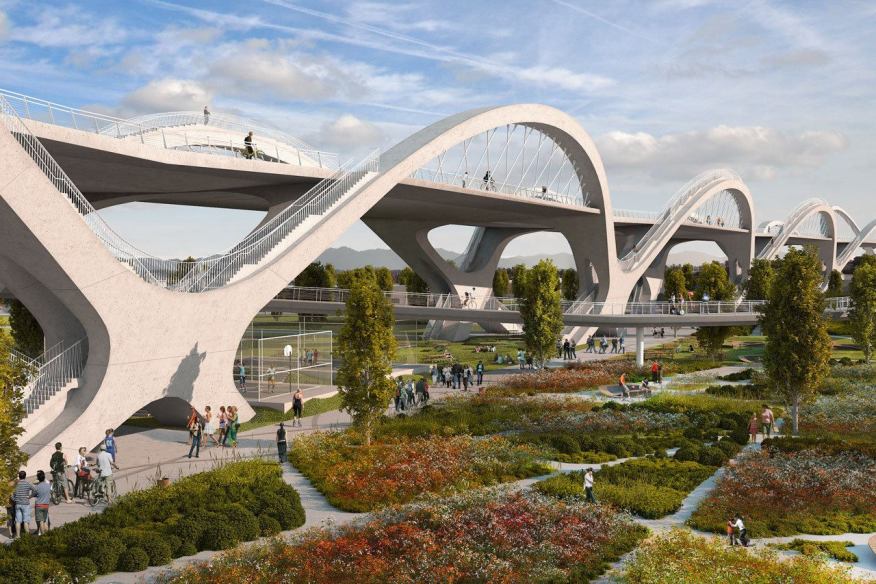

How can we accomplish this? Coordination among stakeholders, no matter how difficult, to work out a myriad of plans/community tools/demonstration projects/policy initiatives/prototypes, not just one, but hundreds of which have their own goals and long-term visions to empower people to get involved in shaping their city’s fluvial destiny.
Can it work? With never enough funding, with endless amounts of impervious concrete and an ill-informed, apathetic public, with neighborhoods all over the Central City gentrifying fast under the pressure of a population looking to escape their suburban car-centric purgatory, nothing will be easy. But speaking up, and listening to each other, especially in the face of famously authoritarian designers, will most definitely make a difference.
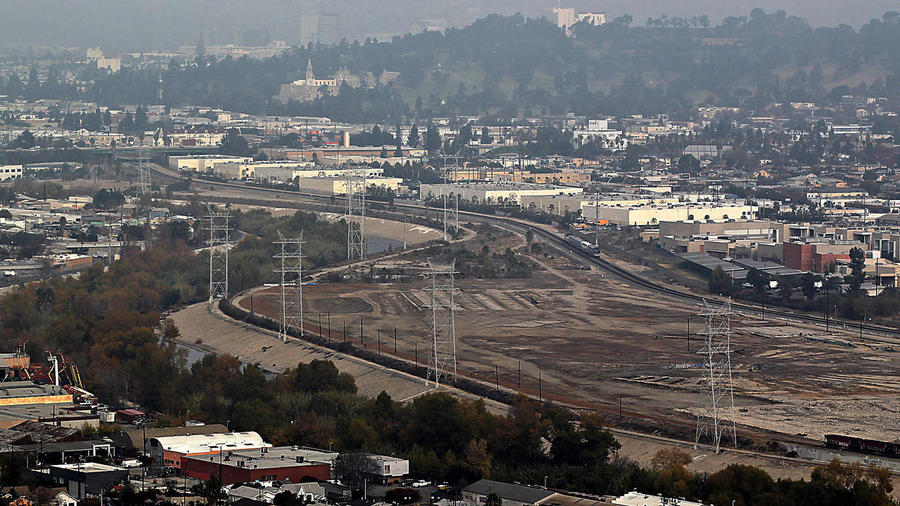

The L.A. Green Festival Expo panel, sponsored by Burbank Green Alliance and SoCal 350 Climate Action, featured Arthur Golding from the Council on Watershed Health, Melanie Winter from The River Project, Jack Eidt from WilderUtopia, and Nancy Aragon from the Northeast Los Angeles Alliance. Jessica Aldridge from Burbank Green Alliance was the moderator.



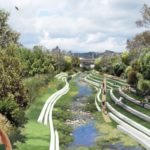
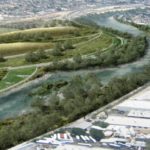
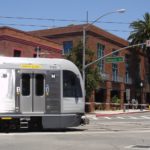
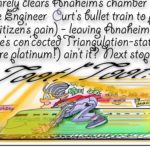
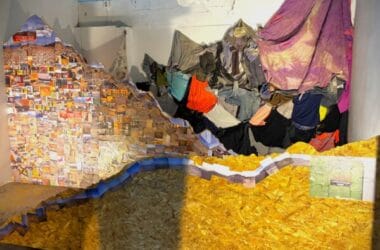





Pingback: Tar Sands Oil "Bomb" Trains Proposed for California | WilderUtopia.com
Pingback: Using Regenerative Design to Revitalize Newport Banning Ranch | WilderUtopia.com